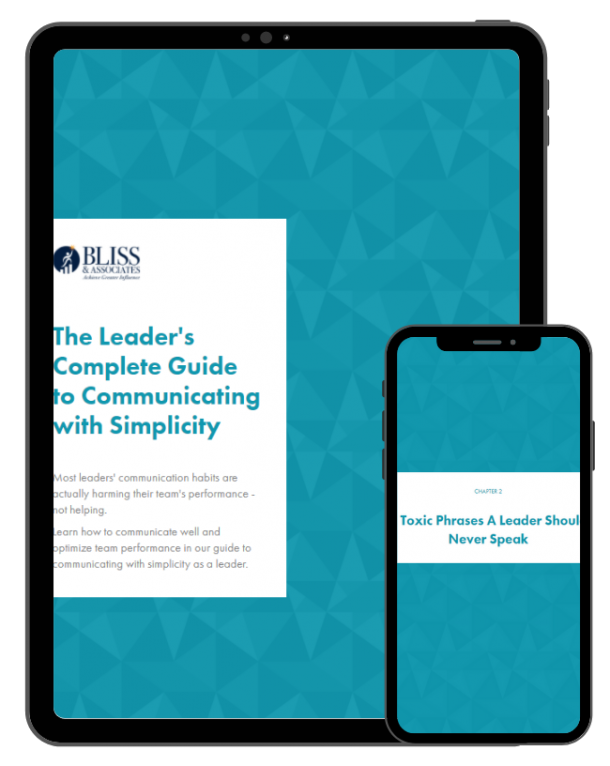
Last week I shared with you the three responses to our attempts to influence someone. They are:
- Resistance response happens when a person or group you are trying to influence, flat out disagrees with what you are asking them to do. As a result, they may refuse to comply, seek to have you overruled by a higher authority, actively ignore your wishes or subversively sabotage your leadership, or otherwise delay and procrastinate.
- Compliance response generally results in the assignment being carried out, yet only to your exact specifications. This is not ideal because the person is most likely not using their full talents, nor are you receiving their absolute best performance. They may even keep you in the dark regarding new information that you were unaware of when developing your strategy.
- Commitment response is characterized by enthusiasm for getting into the assignment and applying their best possible talents to deliver outstanding results that often exceed your expectations.
Influence is our ability to persuade another person or group to our way of thinking such that they are willing to change their behavior and go along with us.
In addition to knowing about the three responses, it is also imperative to know how best to reach the specific people you are attempting to influence. This week, I’ll explain how understanding the four basic communication styles (sometimes known as “social styles”) can optimize your influence and ultimately your leadership impact.
Years ago, it was common practice for leaders to rely on positional authority as their main source of influence. Some referred to this as the “Golden Rule” – he who has the gold sets the rules! In this context, the positional leader called the shots and if you wanted to remain on the team, you had to abide by the decree and comply with their orders.
But in recent decades, social scientists have conducted and validated significant research that indicates your ability to connect with those you are trying to influence really does matter.
Given the four basic communication styles, if a leader uses the style most comfortable FOR THEM, they will only be successful 25% of the time and presumably less successful the balance of the time. Not very good odds!
My desire is to help you be more successful, more often. Knowing how to recognize and use the four communication styles will help. Here they are in a nutshell:
- Driver – These leaders are the hard-charging, Type A personalities who are action-oriented, like to be in charge, and don’t care for the small talk. The best way to communicate with them is to be clear and succinct, saying just what they need to hear. You should be well prepared and provide a few options for them to choose from. Who do you know who fits this style?
- Expressive – These leaders are abstract thinkers and tend to be creative. They enjoy talking, are generally extroverted with lots of energy, and yet are poor listeners. The best way to communicate with them is to begin by talking about things you know they are interested in before easing into the reason you are meeting. . Your communication should be fast moving and stimulating, and it’s best to put things in writing so they can “see” what you are asking them to do. Who do you know who fits this style?
- Amiable – These leaders are easy-going yet reserved, cooperative, and like to be of service to others. They like to take their time making decisions and dislike confrontation. The best way to communicate with them is to present your case in a non-threatening manner and allow them time to think. Your ideas should be logical if you want to be successful. Who do you know who fits this style?
- Analytical – These are the critical thinkers who must have the facts and supporting details. They resist change, so your reasons must be compelling. You would do well to prepare your case in advance, sticking to a business-like conversation with minimal emotions; be accurate with action plans in writing and allow them time to study the information before taking the action you are seeking. Who do you know who fits this style?
In reality, most of us have some of several of these styles within us, yet most of us tend to use one primary style more than the others.
Imagine if you are an “Analytical” person and you take your time presenting your case to a “Driver.” If you approach the Driver with your Analytical style, be prepared for the Driver to exhibit their impatience with you and ask you to cut to the chase.
Hopefully, with this brief exercise, you can see how important it is to know someone’s communication style and adapt your approach when attempting to exert influence. Remember, the old “command and control” and positional leadership styles are no longer effective. But the most successful leaders employ emotional intelligence and empathy to create real influence, change, and success.
I’d be interested in learning how you can apply this in your organization. Let me know.
Best regards,
Bill
PS, I have a short quiz that helps determine your preferred communication style which takes only 6-8 minutes to complete. Of course, the Driver will complete it in 3 minutes while the Analytical will take their time ensuring each answer is perfect! I’d be happy to let you use it – let me know and I’ll email it to you.

